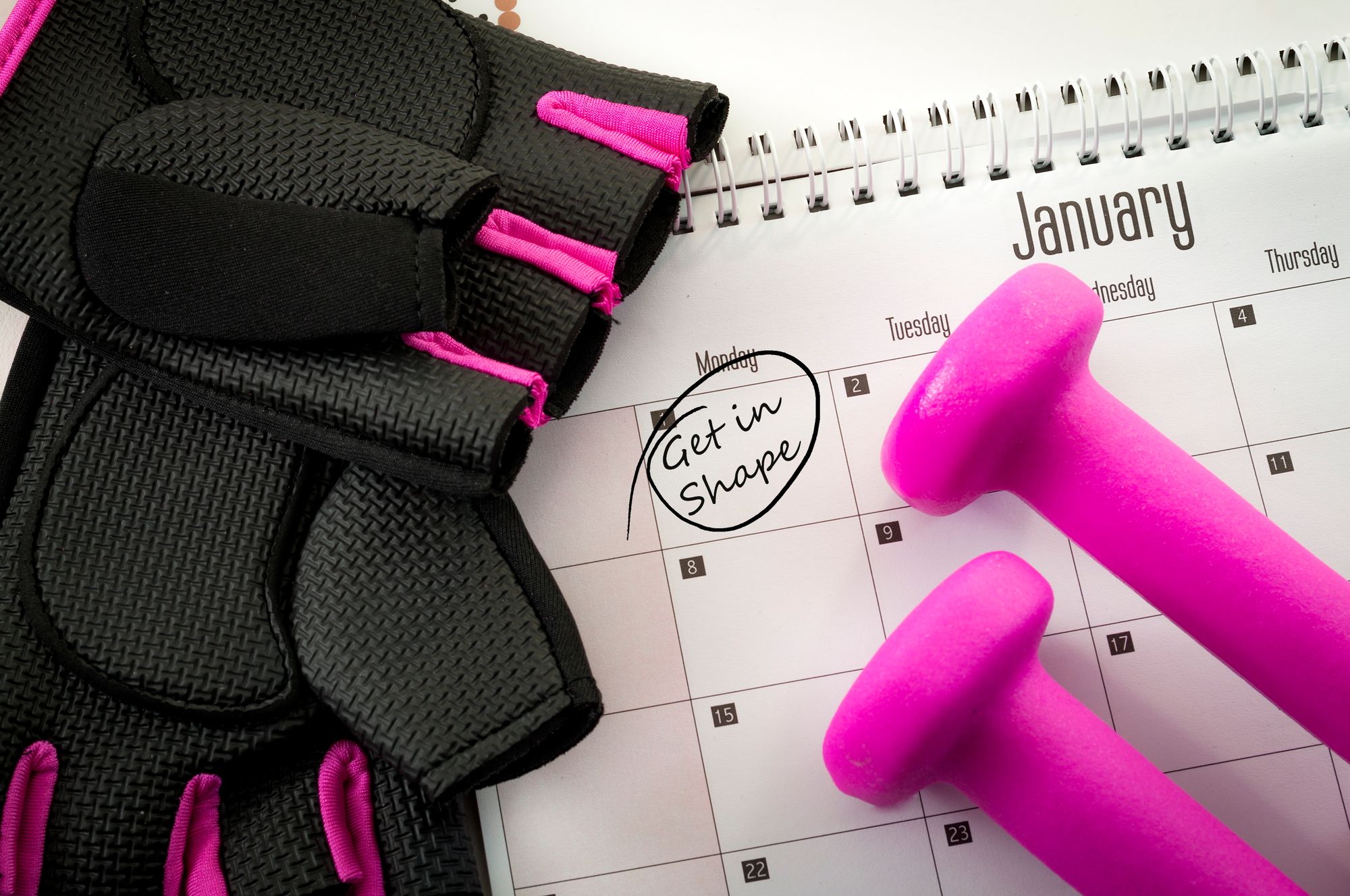Let's face it: We all encounter obstacles on our fitness journeys. Life throws us curveballs, and sometimes our workout routines have to take a backseat. Whether you've been sidelined for an extended period or recently took a break to recharge and reset, the thought of getting back into shape can be daunting. Fortunately, ETNT is here to help. We reached out to Tracie Haines-Landram, CSCS, a certified strength and conditioning specialist, and nutrition coach at Barbend, to share her top tips for regaining your fitness after a long hiatus. She provided us with these 12 essential guidelines that will set you on the path to peak physical condition.
Returning to fitness after an extended break can be intimidating when you're not sure where to begin," says Haines-Landram. "The good news is that you're not starting from scratch. You bring experience to the table. While you can draw from past strategies that have led to your success, incorporate these fundamental rules for a gradual and effective journey back to your best self.
1) Establish Realistic Objectives

Whether you're aiming for a specific number of weekly workouts or looking to steadily improve your stamina, defining clear goals can provide you with direction and motivation throughout your fitness journey. Begin with modest objectives, recognize your current starting point, and use it as a foundation for progress.
Haines-Landram advises, "We frequently express the desire to 'get back into shape,' but what does that truly mean to you? Are you concerned with how you feel, your appearance, or your performance? To create meaningful goals that are both attainable and inspiring, be precise and honest with yourself, establishing both short-term and long-term objectives.
2) Evaluate Your Current Physical Condition

Prior to embarking on a new fitness regimen, it is essential to conduct an assessment of your current fitness level. This critical step enables you to pinpoint your strengths, weaknesses, and areas that require enhancement. It's important to note that this assessment should not involve comparing yourself to others or your past self. Instead, it is about gaining a comprehensive understanding of your present condition, allowing you to tailor your comeback strategy effectively.
Haines-Landram advises, "Initiate the process by evaluating your existing fitness level as a means of setting your fitness goals. This evaluation should encompass both qualitative aspects, such as how you feel and appear, and quantitative aspects, including your physical performance.
3) Establish a Practical and Achievable Plan

Design a fitness plan that fits your daily life and takes into account your existing obligations. Whether you lean towards home exercises or prefer the gym, ensure your plan is practical and accommodates your timetable, enhancing the chances of your commitment. Haines-Landram advises, "Create a workout routine that harmonizes with your schedule and progresses in intensity gradually. A common error is pushing the intensity too quickly, potentially resulting in exhaustion or injury. We often recall our previous capabilities and assume we can immediately return to that level.
4) Stay Consistent

Although your progress may be gradual, maintaining a consistent approach to your plan will ultimately produce substantial outcomes. Whether it's a brief 20-minute workout or a more extended session, integrating daily physical activity into your routine is vital.
Haines-Landram emphasizes, "Consistency is paramount. Strive for regular workouts, even if they are initially shorter. This is primarily about shaping your mindset. You want to establish the identity of someone who exercises, and with each workout, you strengthen that self-image.
5) Monitor Your Advancements

Keep a record of your workouts and take note of any enhancements in your strength or stamina. You can also document your mental and emotional state during and after your exercise sessions.
According to Haines-Landram, "Maintain a workout diary or utilize apps to monitor your progress both in and out of the gym. Concentrate on habits that bolster your objectives, not just the objectives themselves. For instance, use a habit tracker on your calendar to tick off each day you exercise or mark every evening you achieve eight hours of sleep.
6) Acknowledge and Celebrate Your Accomplishments

Recognize your milestones and celebrate them, whether it's accomplishing a tough workout, reaching a particular objective, or staying committed to your fitness regimen. This practice reinforces positive habits and cultivates a success-oriented mindset. "You don't need to wait until you're fully back in shape to celebrate," advises Haines-Landram. "Recognize your progress and utilize it as a means of positive reinforcement.
7) Create Accountability

Adding a layer of accountability to your comeback journey provides valuable support. Consider finding a workout partner, enrolling in a fitness class, or sharing your goals with family and friends to help maintain your commitment.
"Motivation can be strong when you first rejoin a workout routine, but external support is often necessary to keep you going when motivation wanes," notes Haines-Landram. "Establish an accountability system to ensure you stay focused on your plan. Connect with an accountability partner for weekly check-ins and discuss your progress. If feasible, schedule your workouts to involve a class or meeting someone.
8) Prioritize Nutrition

Proper nutrition is a well-known key to reaching your fitness objectives. Embrace a diet centered on whole, minimally processed foods that provide the energy needed for your workouts and aid in recovery.
Give careful consideration to your nutrition, emphasizing well-rounded meals that align with your workout goals. For instance, if your aim is to build strength and increase muscle mass, prioritize your total calorie intake and protein consumption. Nutrition plans will differ depending on your objectives but ensuring that your nutrition supports your goals is essential," advises Haines-Landram.
9) Meal Prep

Preparing and organizing your meals in advance not only saves time but also ensures that you have nutritious options readily available, reducing the temptation to opt for unhealthy choices. Additionally, research has shown a connection between meal prepping and effective weight management.
"Our food environments are filled with tempting options that can steer us away from our nutritional goals," explains Haines-Landram. "Having a meal plan in place helps resist the urge to choose convenience over health. When we think of 'meal prepping,' we often picture an elaborate process of meticulously planning, cooking, and storing our food for the entire week in identical containers. However, meal prep doesn't have to be so structured. It can be as simple as ensuring your grocery list includes all the necessary ingredients for the week.
10) Stay Hydrated

Adequate hydration is essential for supporting bodily functions, promoting recovery, and optimizing your performance. Make staying properly hydrated a fundamental part of your daily regimen.
"Hydration plays a vital role in overall health and exercise performance, regardless of your objectives," emphasizes Haines-Landram. "Even during the winter months when you might not feel as thirsty as you do during summer workouts, it's important to maintain proper hydration. Incorporating a reusable water bottle into your daily routine can help with this.
11) Give Importance to Rest and Recovery

Rest and recovery are essential components of your fitness journey. Provide your body with the necessary time to recuperate between workouts, prioritize getting quality sleep, and integrate rest days into your routine. This balanced approach not only prevents burnout but also encourages a sustainable path to regaining your fitness.
Haines-Landram emphasizes, "Dedicating time for rest and recovery is crucial to avoid burnout and reduce the risk of injuries. It's during this recovery period that you can tune into your body's signals and evaluate your progress.
12) Seek Professional Guidance

Whether it's a personal trainer, physical therapist, or registered dietitian, don't hesitate to seek professional guidance when embarking on your fitness journey after a prolonged hiatus. Their specialized expertise can offer personalized advice and assistance that caters to your individual requirements and aspirations.
Haines-Landram recommends, "If possible, consult with a certified fitness professional to receive personalized guidance. You can also consider joining a group fitness challenge, either in person or virtually, that aligns with your goals and offers a supportive community."

